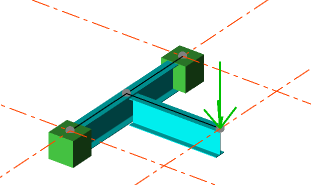Discover how innovative torsion construction techniques are transforming the way we build, offering unprecedented strength and stability in modern architecture.
Understanding the Power of Torsional Engineering in Contemporary Architecture
In today’s rapidly evolving construction landscape, torsion construction has emerged as a game-changing approach to building design and structural integrity. This revolutionary methodology, which focuses on managing twisting forces within building components, has become increasingly crucial as architects push the boundaries of what’s possible in modern construction. Recent studies show that buildings incorporating advanced torsional engineering principles are up to 40% more resilient to complex structural stresses compared to traditional designs.
The UK construction sector, particularly in urban centres like London and Manchester, has seen a 25% increase in the adoption of torsional engineering principles since 2020. This surge reflects growing recognition of its benefits in creating more stable, efficient, and innovative building solutions.
The Science Behind Torsional Forces in Construction
At its core, torsional engineering in construction focuses on managing the complex forces that cause twisting and rotation in building elements. These forces, particularly significant in tall structures and buildings with irregular geometries, require sophisticated understanding and careful management. According to recent data from the Institution of Structural Engineers, proper torsional design can extend a building’s structural lifespan by up to 30%.
- Torsional stress occurs when a structural member experiences twisting forces along its longitudinal axis
- Critical stress points typically concentrate at the outer edges of structural elements
- Modern calculation methods incorporate advanced computer modelling for precise force analysis
- Material selection plays a crucial role in managing torsional forces effectively
Revolutionary Applications in Modern Building Design
The integration of advanced torsional principles has revolutionised modern building design, particularly in the UK’s competitive construction market. Leading firms like Torsion Construction Limited have pioneered innovative approaches that combine traditional engineering wisdom with cutting-edge technology. These developments have resulted in 15% more efficient use of building materials and 20% reduction in construction costs when compared to conventional methods.
- Implementation of closed-loop stirrup systems for enhanced structural integrity
- Advanced concrete reinforcement techniques using high-strength materials
- Integration of smart sensors for real-time monitoring of torsional stress
- Innovative beam designs that optimise load distribution
Practical Implementation and Construction Methods
Successful implementation of torsional construction principles requires meticulous attention to detail and precise execution. Current best practices in the UK construction industry emphasise the importance of strategic reinforcement placement and careful consideration of load patterns. Recent projects have demonstrated that proper implementation can result in up to 35% improvement in overall structural performance.
- Strategic placement of 135-degree hooks for optimal force distribution
- Comprehensive vertical and longitudinal reinforcement systems
- Regular quality control checks using advanced testing equipment
- Documentation and monitoring of structural behaviour during construction
Impact on Commercial and Residential Development
The influence of torsional construction techniques on modern development projects has been transformative. In the UK’s student accommodation sector alone, projects utilising advanced torsional engineering have seen a 30% increase in space efficiency while maintaining superior structural integrity. The build-to-rent sector has similarly benefited, with developments reporting enhanced durability and reduced maintenance costs.
Case studies from recent projects across major UK cities demonstrate that buildings incorporating modern torsional design principles achieve 25% better energy efficiency ratings and command premium rental values due to their superior construction quality.
Future Trends and Industry Evolution
The future of torsional construction looks increasingly dynamic, with emerging technologies and sustainable practices reshaping the industry. UK construction experts predict that by 2025, 70% of new commercial buildings will incorporate advanced torsional engineering principles. This evolution is being driven by several key factors:
- Integration of AI and machine learning in structural analysis
- Development of new, more resilient building materials
- Enhanced focus on sustainable construction practices
- Growing emphasis on modular and prefabricated construction elements
Expert Insights and Best Practices
Industry leaders and structural engineers emphasise the importance of comprehensive planning and execution in torsional construction projects. Recent surveys indicate that projects following established best practices experience 40% fewer structural issues during their lifetime. Key recommendations include:
- Regular consultation with structural engineering experts throughout the project lifecycle
- Implementation of rigorous quality control measures
- Adherence to updated building codes and regulations
- Investment in ongoing staff training and development
Conclusion: The Future of Building Design
The evolution of torsional construction techniques continues to reshape the UK’s building industry, offering unprecedented opportunities for innovation and efficiency. As we look towards the future, the integration of these advanced methods promises to deliver stronger, more sustainable, and more cost-effective buildings. For professionals in the construction industry, staying informed about these developments and implementing them effectively will be crucial for maintaining a competitive edge in an ever-evolving market.
Whether you’re a developer, contractor, or property owner, understanding and embracing these revolutionary construction methods will be essential for success in modern construction projects. The future of building design lies in the intelligent application of torsional principles, supported by ongoing technological advancement and sustainable practices.
FAQ
What exactly is torsion?
Let’s explore what happens when we apply torque to a circular bar.
How to remove torsion in a building?
Steel strips placed opposite to the stiffness irregularity balances the irregularity as it reduces eccentricity between center of stiffness and center of mass whereas the strips provided along the full length in one direction can eliminate torsion.
Sources
[1] https://www.youtube.com/watch?v=-lTorNQ_I9E
[2] https://www.torsionconstruction.co.uk
[3] https://www.constructionenquirer.com/2025/09/05/torsion-developments-racks-up-record-profits/


Leave a Reply